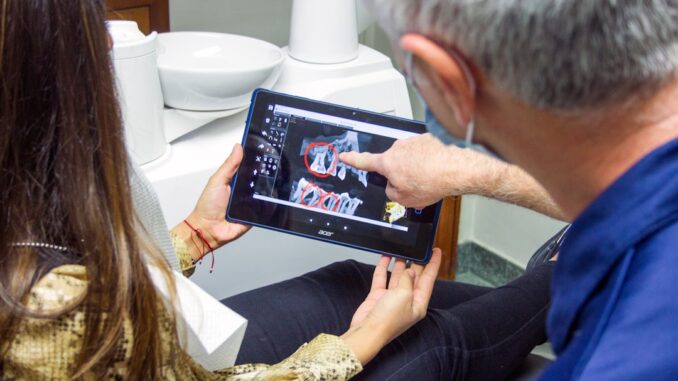
Summary
Scientists have discovered a potential link between changes in the retina and Alzheimer’s disease, paving the way for earlier diagnosis and treatment. Research suggests that retinal imaging could serve as a non-invasive method to detect early neural changes associated with Alzheimer’s. This breakthrough offers hope for improved patient outcomes and quality of life.
** Main Story**
Alzheimer’s disease. It’s a tough one, right? Millions are affected by this neurodegenerative condition worldwide, and unfortunately, we still don’t have a cure. But, early diagnosis? That’s where the real power lies. Managing symptoms, potentially slowing the whole thing down… it all hinges on catching it early. And guess what? A team at the Indiana University School of Medicine might have just found a new key: the retina.
The Eye: A Window to the Brain?
Their groundbreaking findings, published in Alzheimer’s & Dementia, suggest a potential link between retinal abnormalities and the APOE4 gene – a known genetic risk factor for Alzheimer’s. In essence, this research shows that the eye might be a fantastic window into the health of the brain. Who would have thought?
Researchers studied the retina – that light-sensing tissue at the back of your eye. And what did they see? Significant alterations in retinal thickness and electrical activity in mice carrying the APOE4 gene. What’s really interesting is that these changes mirror clinical observations of retinal abnormalities in human Alzheimer’s patients. Because of this, retinal imaging could, potentially, be a non-invasive and easily accessible tool for early detection. Let’s be honest, that is a game changer.
Now, the APOE4 gene, it’s known for upping the risk of Alzheimer’s. The study showed that this gene messed with retinal function in mice, a direct link between this genetic thing and visual processing deficits. Which makes sense, because these deficits are often linked to Alzheimer’s disease.
The Importance of Catching it Early
Think about it: identifying these early neural changes associated with Alzheimer’s… it’s huge! Earlier diagnosis? It can mean more timely interventions. Lifestyle changes, medication, clinical trials… the works. These can potentially slow things down, really boosting a patient’s quality of life. And you know, when it comes to something like Alzheimer’s, quality of life is paramount.
Dr. Ashay Bhatwadekar, the main investigator on the study and associate professor of ophthalmology at Indiana University School of Medicine, hit the nail on the head when he described the eye as “a window to the brain,” reflecting changes linked to neurodegenerative conditions like Alzheimer’s.
Why Retinal Imaging Matters
What’s so exciting about this research is the hope it offers for improved Alzheimer’s care. How so? By offering a less invasive and potentially cheaper way to diagnose Alzheimer’s early. I mean, the traditional methods – PET scans, cerebrospinal fluid analysis – they are expensive, and sometimes invasive, right? But retinal imaging? Pretty simple, non-invasive. Could be part of your regular eye exam. That’s big.
Cedars-Sinai Medical Center is also investigating the potential of retinal imaging as an early detection tool for Alzheimer’s. Their research has uncovered a correlation between the levels of amyloid deposits in the retina and the severity of brain changes associated with Alzheimer’s. This further supports the connection between retinal changes and disease progression, and it provides, more evidence for retinal imaging being useful in early detection and monitoring. The science, it’s all coming together.
So, the Indiana University School of Medicine’s research, coupled with findings from these other studies, is a significant stride forward in Alzheimer’s research. This discovery holds massive potential for enhancing early diagnosis and treatment strategies, resulting in more effective interventions and improved outcomes for those impacted by this awful disease.
AI: The Future of Alzheimer’s Detection?
And let’s not forget AI. We’re talking about developing AI models that can analyze retinal images to detect those really subtle changes in retinal vasculature that might indicate early-stage Alzheimer’s or mild cognitive impairment. Imagine that. AI making early detection even more accurate and efficient, giving clinicians a powerful tool to identify individuals at risk and enabling timely interventions. Now, that’s something I’m excited to see.
It’s March 8, 2025, and these advancements in geriatric care are already looking like a beacon of hope for so many. Offering, as they do, the promise of earlier diagnosis, more effective treatments, and a better quality of life for those affected by Alzheimer’s disease. And frankly, what more could you ask for?


Retinal imaging for early Alzheimer’s detection? Finally, a good excuse to stare deeply into people’s eyes! I’m picturing it now: “Sorry, are you flirting, or just checking for amyloid deposits?” Either way, I’m intrigued!
Haha, that’s a hilarious take! Imagine the ice-breaker possibilities! Seriously though, the non-invasive nature of retinal scans could make regular Alzheimer’s screening as commonplace as checking your vision. It opens doors to much wider preventative care and earlier intervention. Very exciting!
Editor: MedTechNews.Uk
Thank you to our Sponsor Esdebe